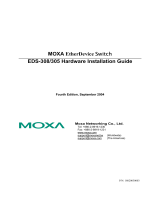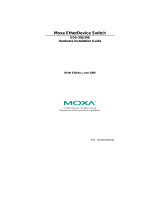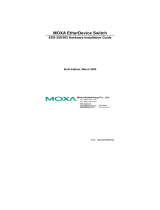
- 8 -
ATEX Information
1. Certificate number DEMKO 18 ATEX 2143X
2. Ambient range: -40°C ≤ Tamb ≤ 75°C (Products with suffix –T),
-10 °C≤ Tamb ≤60 °C (Products without suffix –T)
3. Certification string: Ex nA nC IIC T4 Gc
4. Standards covered:
EN60079-0:2012+A11:2013, EN60079-15:2010
5. The conditions of safe usage:
• These devices shall be mounted in a suitable tool-accessible
ATEX/IECEx certified enclosure rated to at least IP54 as defined
in IEC/EN 60079-0 and Pollution Degree 2 as defined in EN/IEC
60664-1, and used within their rated electrical and
environmental ratings.
• The min. cross-sectional area of the protective conductor is 3.31
mm
2
. The external earthing conduct shall be at least 4 mm
2
.
• Conductors suitable for Rated Cable Temperature ≥ 100°C
• Input conductor with 28-12 AWG (max. 3.3mm
2
) to be used
with the devices.
Wiring Requirements
The power for this product is intended to be supplied by a Listed
Power Unit, with output marked LPS, and rated to deliver 12 to
4
8
VDC at a maximum of 620 mA.
Be sure to disconnect the power cord before installing and/or
wiring your
Moxa EtherDevice Switch. Calculate the maximum
possible current in each power wire and common wire. Observe
all electrical codes dictating the maximum current allowable for
each wire size.
If the current goes above the maximum ratings,
the wiring could overheat, causing serious da
mage to your
Please read and follow these important guidelines:
• Use separate paths to route wiring for power and devices. If power
wiring and device wiring paths must cross, make sure the wires are
perpendicular at the intersection point.
NOTE: Do not run signal or communications wiring, and power wiring
through the same wire conduit. To avoid interference, wires with
different signal characteristics should be routed separately.
• Use the type of signal transmitted through a wire to determine which
wires should be kept separate. The rule of thumb is that wiring that
shares similar electrical characteristics can be bundled together.





















